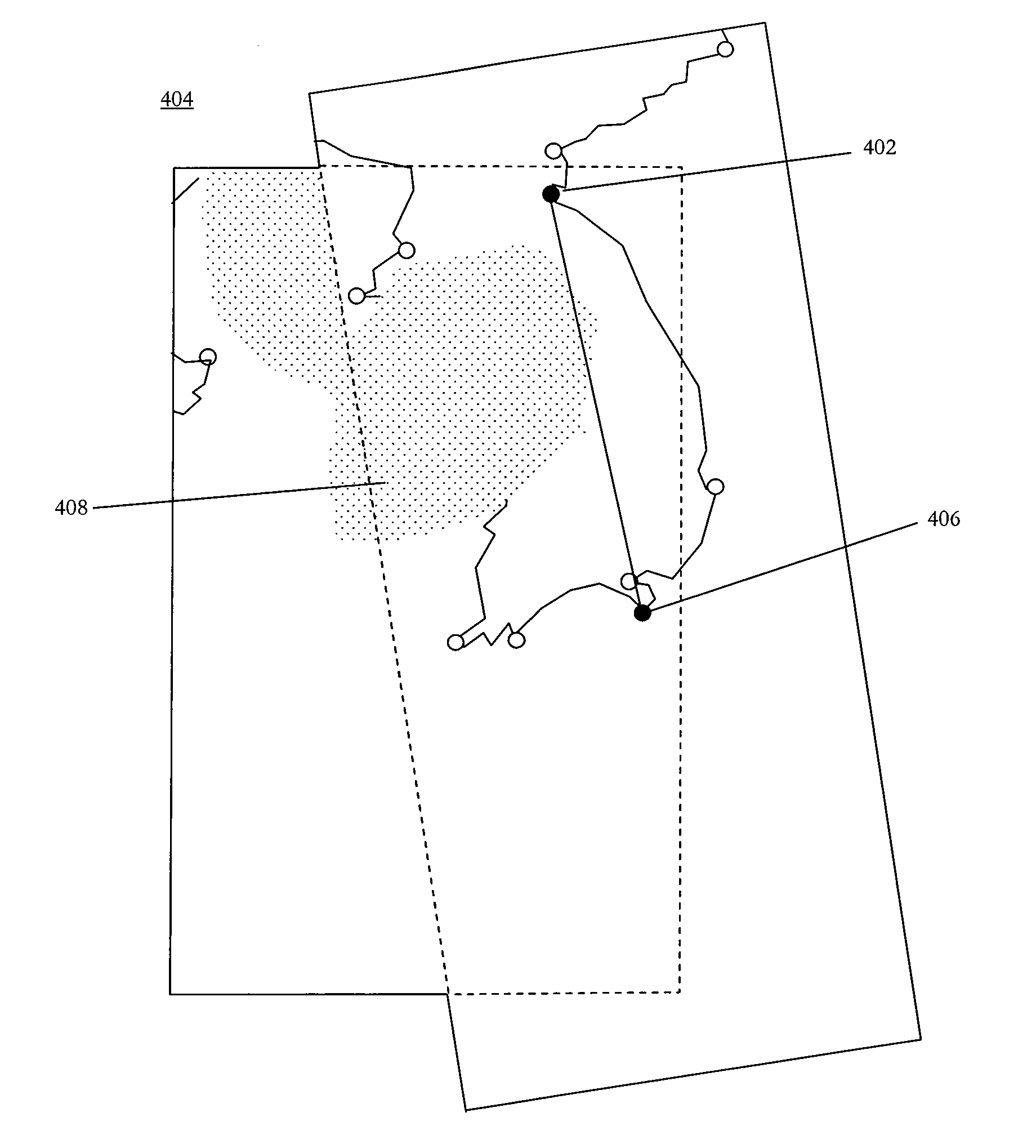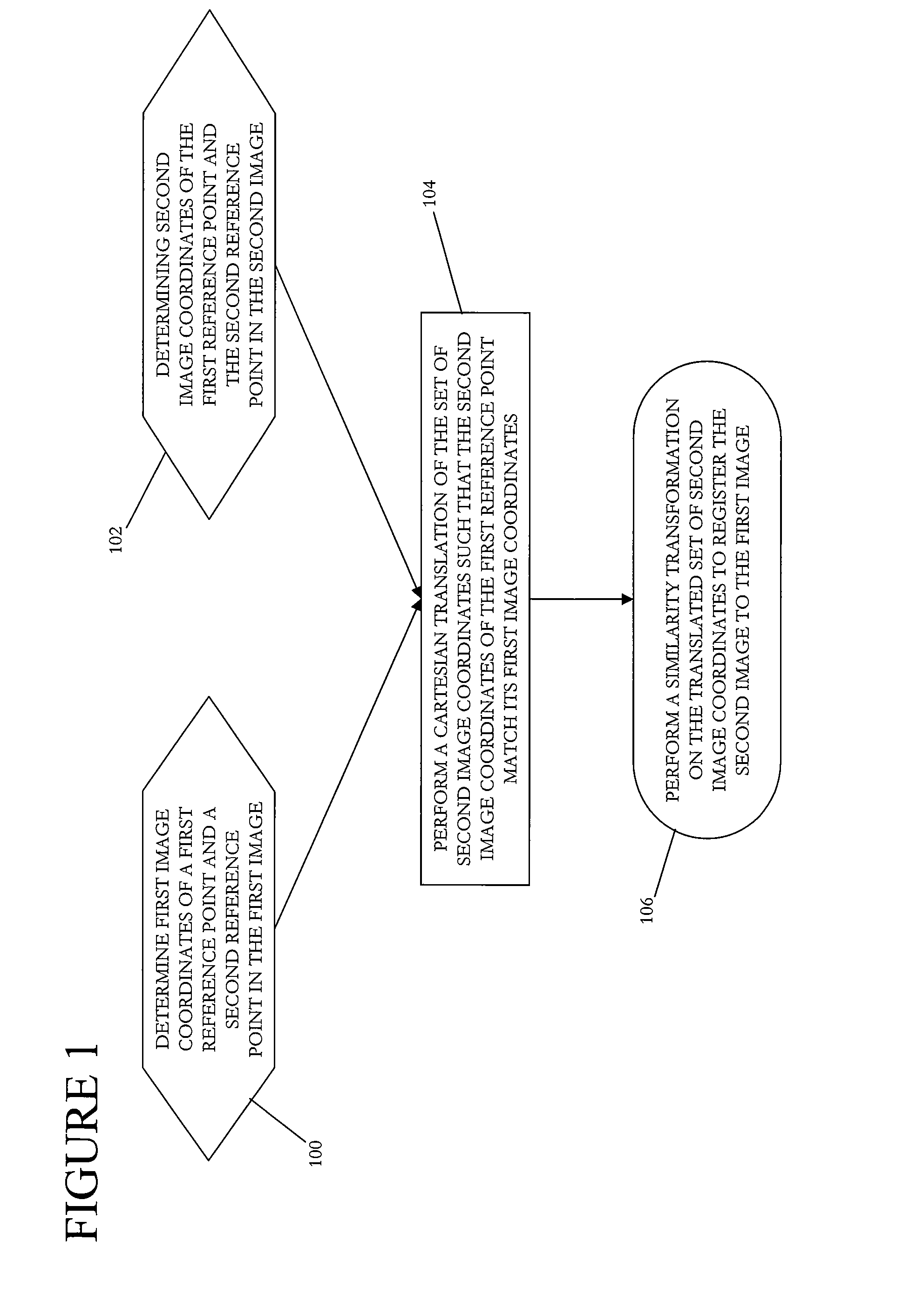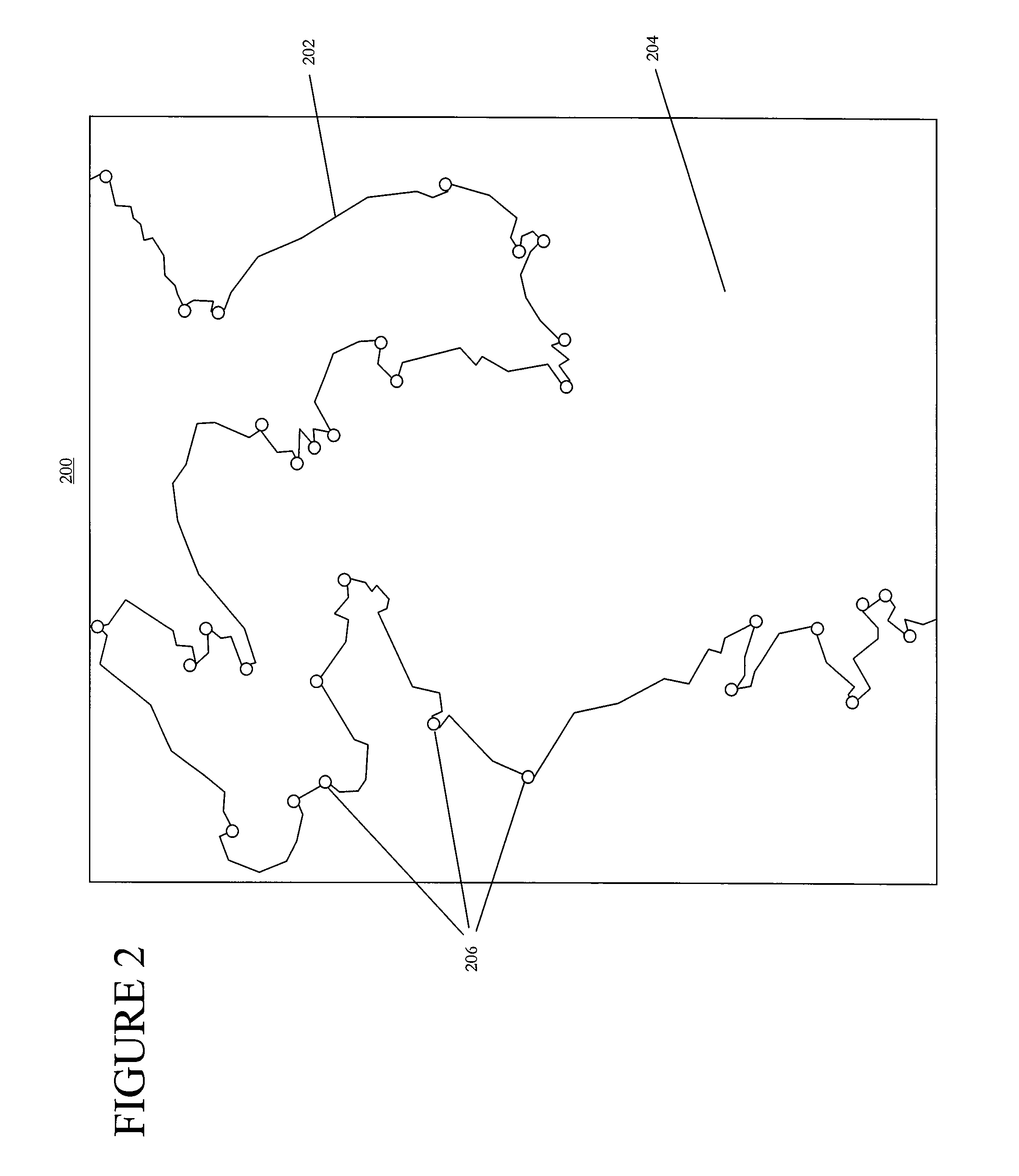Geometric registration of images by similarity transformation using two reference points
a similarity transformation and image technology, applied in the field of registering images using reference points, can solve the problems of increasing the difficulty of registering images, not always practicable to obtain more than three reference points, and inapplicability of methods
- Summary
- Abstract
- Description
- Claims
- Application Information
AI Technical Summary
Benefits of technology
Problems solved by technology
Method used
Image
Examples
Embodiment Construction
[0016]Exemplary embodiments of the present invention include methods of registering images with only two common reference points using similarity transformations. These exemplary registration methods may also include the use of more accurate registration algorithms when the images have more than two common reference points. These exemplary methods may enhance present geometric registration processes and may also assist in a wide range of applications in image analysis. The images used may include satellite or other high altitude images of a planetary surface.
[0017]Exemplary embodiments of the present invention may be used to obtain a geometric registration using only two reference points. These exemplary methods include processes of translating, scaling and rotating at least one of the images to match a particular size and position. Present technology for the geometric registration, which is also known as georeferencing, georegistration, georectification, and / or geocorrection in the...
PUM
 Login to View More
Login to View More Abstract
Description
Claims
Application Information
 Login to View More
Login to View More - R&D
- Intellectual Property
- Life Sciences
- Materials
- Tech Scout
- Unparalleled Data Quality
- Higher Quality Content
- 60% Fewer Hallucinations
Browse by: Latest US Patents, China's latest patents, Technical Efficacy Thesaurus, Application Domain, Technology Topic, Popular Technical Reports.
© 2025 PatSnap. All rights reserved.Legal|Privacy policy|Modern Slavery Act Transparency Statement|Sitemap|About US| Contact US: help@patsnap.com



